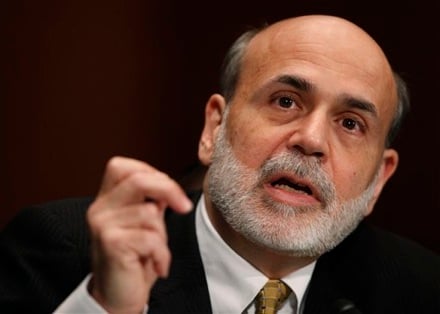The Federal Reserve meets on Tuesday. Stock pickers assume the overnight rate will still be the same on Wednesday.
The stock market doesn't want any surprises from this week's Federal Reserve's meeting.
It is widely expected that the Fed will keep the fed funds rate, its key lending rate, at a historic low near zero when it meets on Tuesday. That means investors and analysts will again pore over the economic assessment statement the Fed releases. They'll be looking for changes to the Fed's wording and its members' voting patterns to get a sense of when rates might go up.
"It's a nonevent," said Paul Wachtel, a professor of economics at New York University's Stern School of Business, of expectations for the Fed's decision on the overnight rate. "If they change the comments, it has a bigger impact."
Investors are well aware that the Fed will eventually have to hike interest rates. The economy will get to a point where it is strong enough to grow, and higher inflation is usually a natural result of expanding economic activity.
The market has already factored in a rate hike as they sent stock prices higher the past few weeks. Still, while they're prepared for rates to go up at some point, investors are likely to react badly in the short term to any indications that a rate hike is in the offing.
So, "the tone of the minutes are being microanalyzed" by investors, said Randy Bateman, chief investment officer at Huntington Asset Advisors.
The Fed has kept the language of its statements essentially unchanged for months. For example, the Fed has said over and over that:
— Inflation is likely to be "subdued for some time;"
— Economic conditions "are likely to warrant exceptionally low levels of federal funds rate for an extended period;"
— Economic activity has "picked up" or strengthened.
Analysts say the repetitive language is not an accident. The Fed doesn't want to upset a nascent economic recovery. Chairman Ben Bernanke and other Fed governors know that any changes that could cast doubt onto what the Fed might do in the near future could disrupt the market and/or upend a recovery.
Analysts believe it will likely take several months of solid, significant economic growth before the Fed starts to tinker with the language of its statement or interest rates. Consistent job growth is probably the single biggest factor the Fed will look at when determining when to considering raising rates.
Earlier this month, the Labor Department said employers cut 36,000 jobs — better than expected, but not the growth the Fed will want to see.
If the Fed's comments remain the same as in previous economic statements, investors have one last place they can look for potential signs of future changes: the voting results when Fed governors decide what action to take about rates.
During the central bank's most recent meeting, in January, Kansas City Federal Reserve President Thomas Hoenig dissented from the committee's decision to keep rates stable. He said the economy has recovered enough that low rates for "an extended period" are no longer necessary.
If additional voters agree with Hoenig, that could be a sign the Fed will increase rates sooner rather than later.
"Dissent votes would be interpreted as a clue," as to when a rate change might happen, said Daniel Egan, president of the Massachusetts Credit Union League.
Even if rates stay the same, the language in the Fed's statement is unchanged and the vote is unanimous on Tuesday, traders and analysts will be mollified, but only for a while. It won't be long before they start analyzing Fed officials' public comments on rates and the economy. Again, the barest hint that rates are going up could prompt investors to sell.
As Len Blum, a managing partner at investment bank Westwood Capital, said, "What the Fed does is always important."







